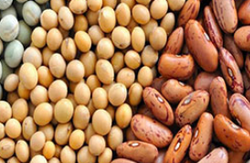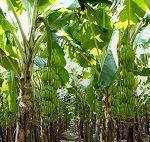Post-harvest losses in agriculture are a significant challenge, particularly in developing regions such as Africa. These losses occur after the harvest and include any reduction in the quantity or quality of agricultural produce, which negatively impacts farmers’ incomes and food availability. For agro-exporters, post-harvest losses can disrupt supply chains, lead to financial losses, and reduce competitiveness in global markets. This write-up will explore what post-harvest activities are, why losses occur, the impact of these losses on agro-exports, and practical strategies to reduce them, including government interventions in African countries.
What Are Post-Harvest Activities in Agriculture?
Post-harvest activities refer to all the processes that occur after the crops are harvested from the field. These activities include:
- Harvesting: The actual collection of ripe crops from the field. Proper timing and technique are crucial to minimize damage.
- Handling and Transportation: Moving the harvested produce from the field to storage or processing facilities. This includes sorting, packing, and transporting under optimal conditions.
- Cleaning and Grading: Removing impurities and sorting produce based on quality standards to meet market requirements.
- Storage: Keeping produce under conditions that maintain quality and prevent spoilage. This includes the use of cold storage, dry warehouses, or traditional methods like clay pots.
- Processing: Converting raw produce into a more stable or consumable form, such as drying, canning, or juicing.
- Packaging and Marketing: Proper packaging protects produce during transportation and storage, while marketing involves getting the products to the market efficiently.
These activities are essential for maintaining the quality and market value of the produce. However, if not managed properly, they can lead to significant post-harvest losses.
Why Do Post-Harvest Losses Occur?
Post-harvest losses occur due to a variety of factors, including:
- Poor Handling Practices: Improper handling during harvesting, sorting, and packing can damage produce, leading to losses. For instance, bruising fruits during harvesting or using inappropriate packing materials can reduce shelf life.
- Inadequate Storage Facilities: Lack of proper storage infrastructure, such as cold rooms or moisture-controlled environments, leads to spoilage, especially for perishable products like fruits, vegetables, and grains.
- Pest and Disease Infestation: Stored crops are often susceptible to pests, fungi, and diseases that can destroy produce or render it unfit for consumption.
- Transport Challenges: Poor road conditions, inadequate transport vehicles, and long transit times can lead to physical damage and spoilage during transportation.
- Environmental Conditions: Exposure to high temperatures, humidity, and rain during and after harvest can accelerate spoilage and reduce quality.
- Lack of Awareness and Training: Many farmers and handlers lack the necessary knowledge and skills in post-harvest management, leading to practices that contribute to losses.
Understanding the Impact of Post-Harvest Losses on Agro-Exports
Post-harvest losses have a significant impact on agro-exports, particularly for African countries where agriculture is a key economic sector. Some of the major impacts include:
- Reduced Export Volumes: High post-harvest losses reduce the quantity of produce available for export, limiting a country’s ability to meet international demand.
- Economic Losses: Losses translate into reduced incomes for farmers and exporters, as damaged or spoiled products fetch lower prices or are rejected by buyers.
- Quality Deterioration: Post-harvest losses often result in a decline in the quality of produce, affecting its marketability and compliance with international standards.
- Increased Costs: The need to replace lost produce or invest in emergency measures to salvage affected products increases the overall cost of export operations.
- Food Security Issues: In addition to impacting exports, post-harvest losses contribute to food insecurity by reducing the availability of food for local consumption.
Strategies to Reduce Post-Harvest Losses
Reducing post-harvest losses requires a combination of improved practices, investments in infrastructure, and the adoption of technology. Here are some practical strategies:
- Improved Harvesting Techniques: Training farmers on the best harvesting practices, including the right time to harvest and gentle handling of produce, can significantly reduce damage.
- Enhanced Storage Solutions: Investing in better storage facilities, such as cold rooms, silos, and moisture-resistant containers, helps preserve the quality of produce. Innovations like solar-powered cold storage are particularly beneficial in regions with limited electricity.
- Efficient Transportation: Upgrading transportation infrastructure, including roads and vehicles, reduces transit times and minimizes damage. Using refrigerated trucks or other temperature-controlled transport options can help maintain product quality.
- Integrated Pest Management (IPM): Implementing IPM strategies, such as using natural predators, biopesticides, and better storage practices, can reduce pest-related losses without harming the environment.
- Use of Post-Harvest Technologies: Adopting technologies like hermetic storage bags, which protect grains from pests and moisture, or using drying technologies to reduce moisture content, can greatly reduce losses.
- Training and Capacity Building: Educating farmers, handlers, and exporters on best practices in post-harvest management is crucial. Training programs should focus on handling, packaging, storage, and the use of technology.
- Improved Packaging: Using appropriate packaging materials that protect produce from physical damage, contamination, and environmental exposure can extend shelf life and improve quality.
- Digital Solutions: Leveraging digital technologies, such as mobile apps for market information, e-commerce platforms for direct sales, and digital tools for monitoring storage conditions, can help optimize post-harvest management.
Government Interventions in African Countries
Governments across Africa recognize the importance of reducing post-harvest losses and are implementing various interventions:
- Policy Support: Many African governments are developing policies that prioritize post-harvest loss reduction, including funding for infrastructure projects and incentives for private sector investment in cold storage and logistics.
- Investment in Infrastructure: Governments are investing in improving rural roads, building storage facilities, and supporting the development of agro-processing zones to enhance the value chain.
- Capacity Building Programs: National agricultural agencies and international organizations are partnering to provide training programs for farmers and agro-exporters, focusing on post-harvest management skills.
- Research and Innovation: Governments are supporting research institutions to develop and promote post-harvest technologies that are affordable and suitable for local conditions. For example, the use of solar dryers for fruits and vegetables has been promoted in several countries.
- Public-Private Partnerships (PPPs): Collaborations between governments and the private sector are driving investment in logistics, storage, and technology, creating a more integrated approach to reducing post-harvest losses.
Focus on Nigeria
In Nigeria, the government has launched several initiatives aimed at reducing post-harvest losses. These include the promotion of integrated pest management, investment in cold storage facilities, and the establishment of agro-processing zones. Additionally, Nigeria is leveraging digital platforms to connect farmers with markets, reducing the time produce spends in storage and transit.
The private sector in Nigeria is also playing a critical role, with companies investing in modern storage solutions and supply chain technologies. There is a growing focus on training farmers and supply chain actors, improving their ability to handle produce efficiently and maintain quality.
Conclusion
Reducing post-harvest losses is essential for enhancing agro-exports from Africa, ensuring food security, and improving the livelihoods of farmers. By adopting improved practices, investing in infrastructure and technology, and fostering collaboration between governments and the private sector, significant progress can be made. As Africa continues to develop its agricultural export sector, reducing post-harvest losses will be key to unlocking its full potential in the global market.
You can contact us on WhatsApp to discuss this topic further.




